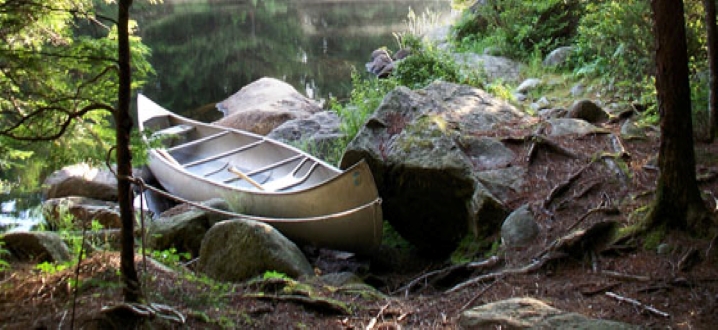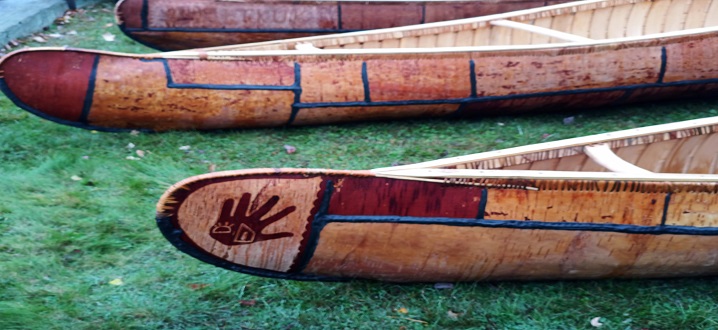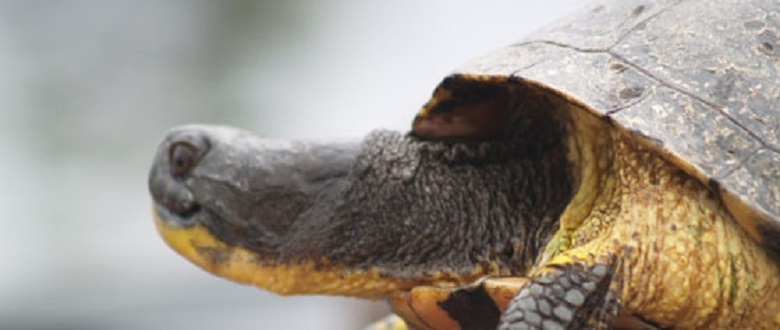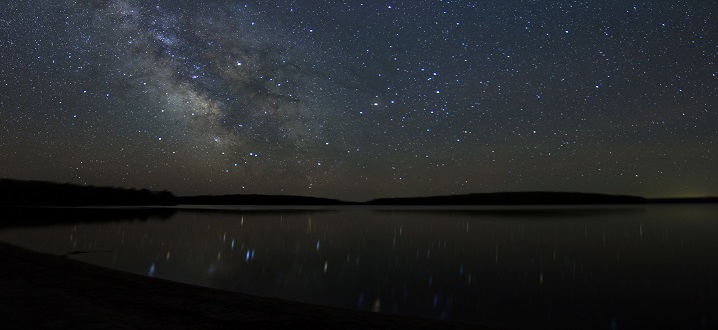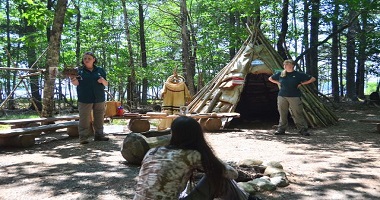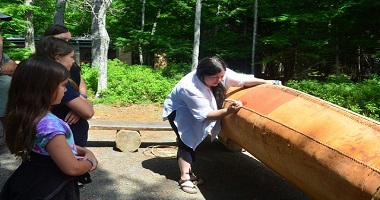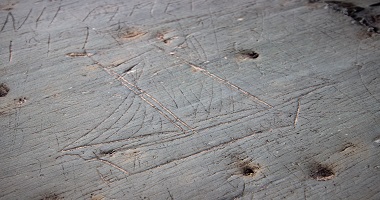National Historic Site
Unique to the Canadian National
Park system, Kejimkujik is a National Park and also a
National Historic Site. Kejimkujik received this
distinction in 1997, and on October 1, 2000 the Historic
Sites and Monuments Board of Canada commemorated the
Mi'kmaq cultural landsacape at Kejimkujik by unveiling
an historic plaque. Their commemoration and the text of
the plaque follow:
"Kejimkujik National Park lies in
an area of glacial scour and deposition that defines its
physical attributes. Lakes and rivers have been gouged
out by ice and by meltwater flows. Drumlins and eskers
dot the landscape. The soils of glacial silts and clays
support a mixed forest. The Nova Scotia peninsula is at
its widest here, producing a localized climate with
slightly warmer summers and colder winters than are
generally found in the maritime environment. Rare
species of plants and animals are found here, such as
the landings turtle. The mixed forest and numerous lakes
and rivers support a rich variety of wildlife, including
deer (replacing earlier moose and caribou), beaver,
waterfowl, fresh-water fish and eels. Some of these
fauna are portrayed in the petroglyphs, which are
engraved in slate that outcrops on the east shores of
Kejimkujik and George Lakes. Originating as sedimentary
beds, they have been folded and scoured by the glaciers
to produce smooth faces suitable for working. The entire
park drains through two river systems, the Mersey and
the Shelburne. The Mersey River forms part of a
traditional transportation route across Nova Scotia,
connecting the Bay of Fundy and Annapolis Basin to the
Atlantic shore at Liverpool. Portages to other rivers
give access to coastal areas around the entire southwest
end of Nova Scotia. At the time of European expansion
into North America, the Mi'kmaq occupied a vast
territory of over 130,000 square kilometers, including
present-day Nova Scotia, most of New Brunswick east of
the St. John River, Prince Edward Island, and part of
the Gaspe Peninsula in Quebec. The territory was divided
into seven politically independent districts. The
district of Kespukwitk ('land ends') covers southwestern
Nova Scotia, including Kejimkujik National Park. The
earliest archaeological evidence in the Park dates to
the Late Archaic period, between 2500 and 4500 years
ago. Since then there has been constant use of the area,
often in the same locations. A site on the Mersey River,
for instance, contains evidence of settlement through
all subsequent time periods up to European contact.
During this time, the resource base of the economy
likely changed little, but the proliferation of sites
and artifacts suggests an increasing population based on
the successful use of those resources. Artifacts show
stylistic changes which reflect both in-situ development
and cultural influences from New Brunswick and New
England. Technological innovations include a change from
dugouts to skin or bark canoes and the introduction of
ceramics. The disappearance of material evidence for
settlement in the early post-contact years suggests a
rapid depopulation of the area, perhaps due to foreign
diseases. By the mid-19th century, however, concerned
for protection of traditional lands, eleven Mi'kmaw
families requested land grants around Kejimkujik Lake
from the colonial government. In 1842, Joseph Howe, the
Indian Commissioner, granted their request. At the same
time, Mi 'kmaq in the area became renowned for their
guiding expertise for international sportsmen. In the
20th century, guiding continued to be a successful
endeavour. Lumbering was also a major commercial
employer. People continued to hunt, fish and gather food
plants and traditional medicines from the land."
The text of the plaque reads:
"MI'KMAQ CULTURAL LANDSCAPE AT KEJIMKUJIK
The
cultural landscape at Kejimkujik attests to a Mi'kmaq
preserice in the area since time immemorial. The
relationship between Mi'kmaq and their environment is
evidenced in seasonal camps, burial grounds, fish weirs,
hunting territories, portages and trails. In the 19th
and 20th centuries, Mi'kmaq cleared homesteads around
Kejimkujik Lake, worked in forestry and excelled as
fishing and hunting guides. Petroglyphs, engraved on
rock outcrops along the lakeshores, portray many aspects
of Mi'kmaq life and spirituality; reflecting the strong
bond between land and people."
